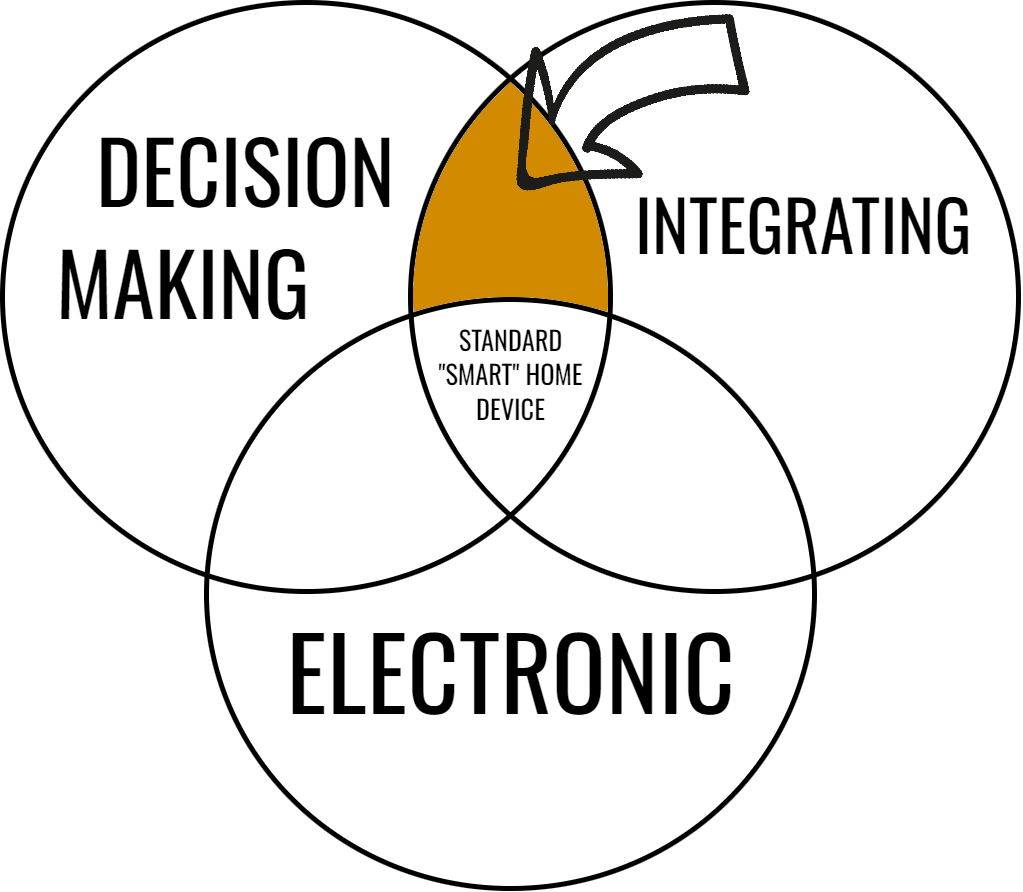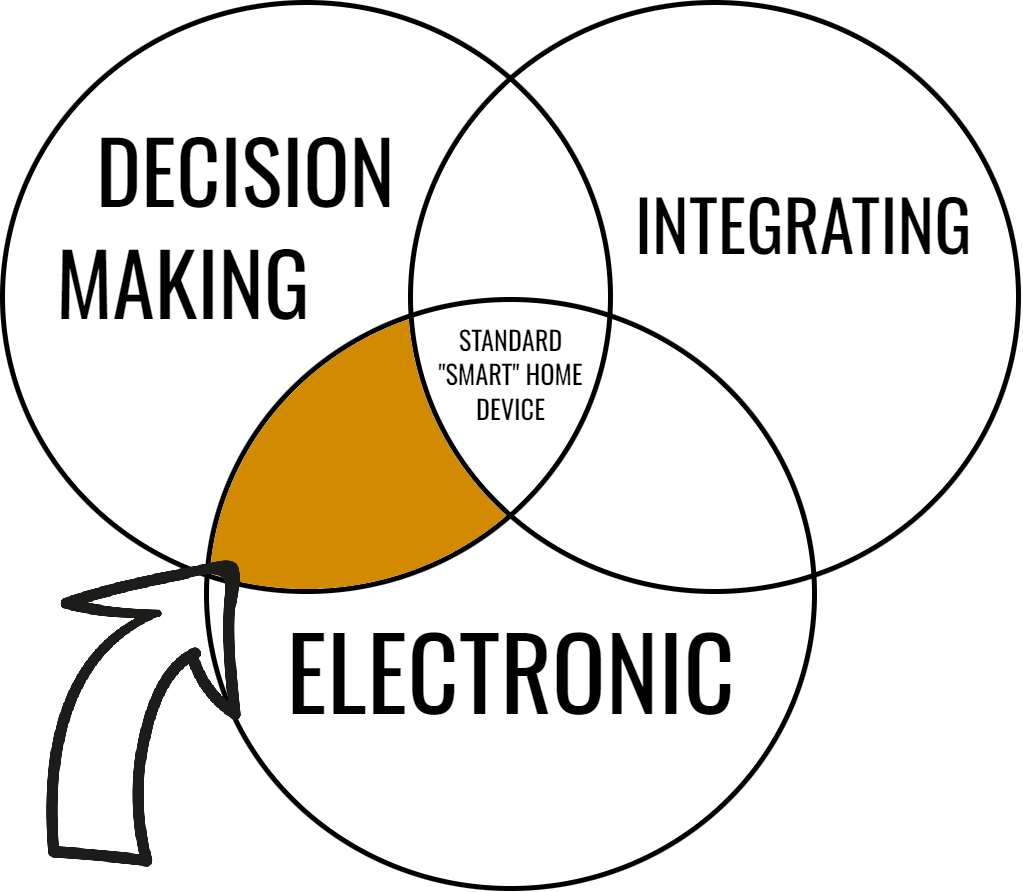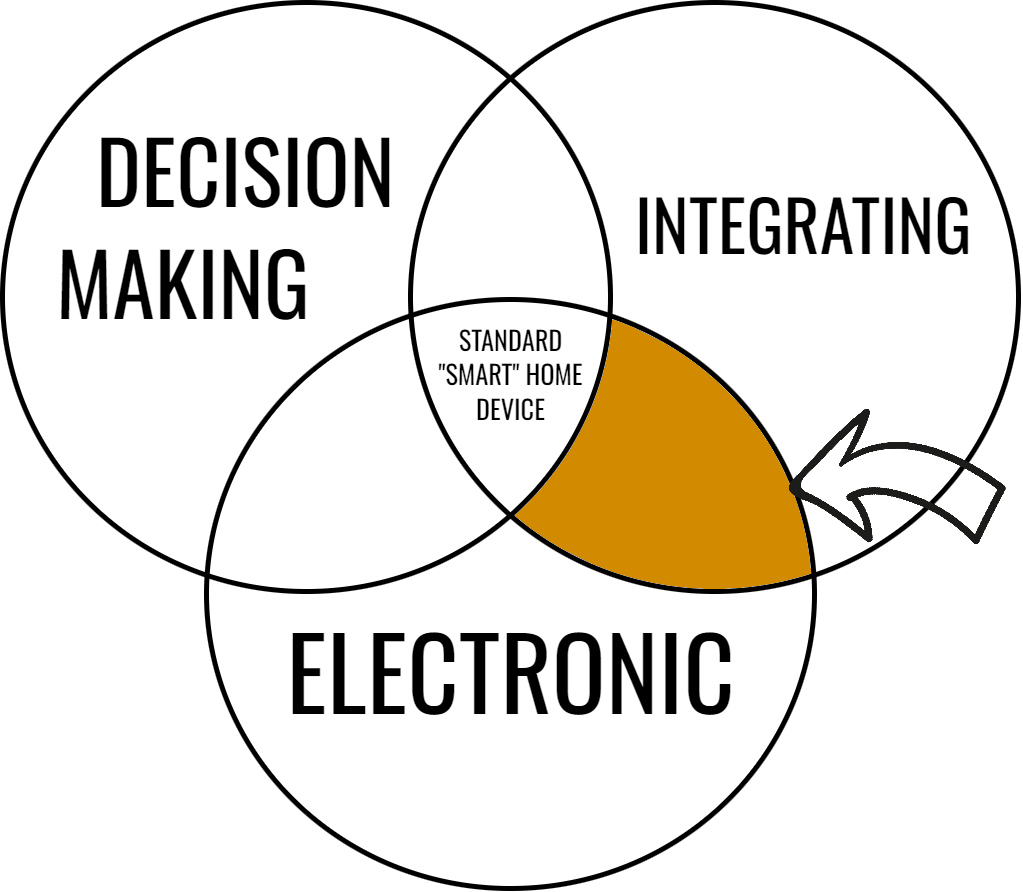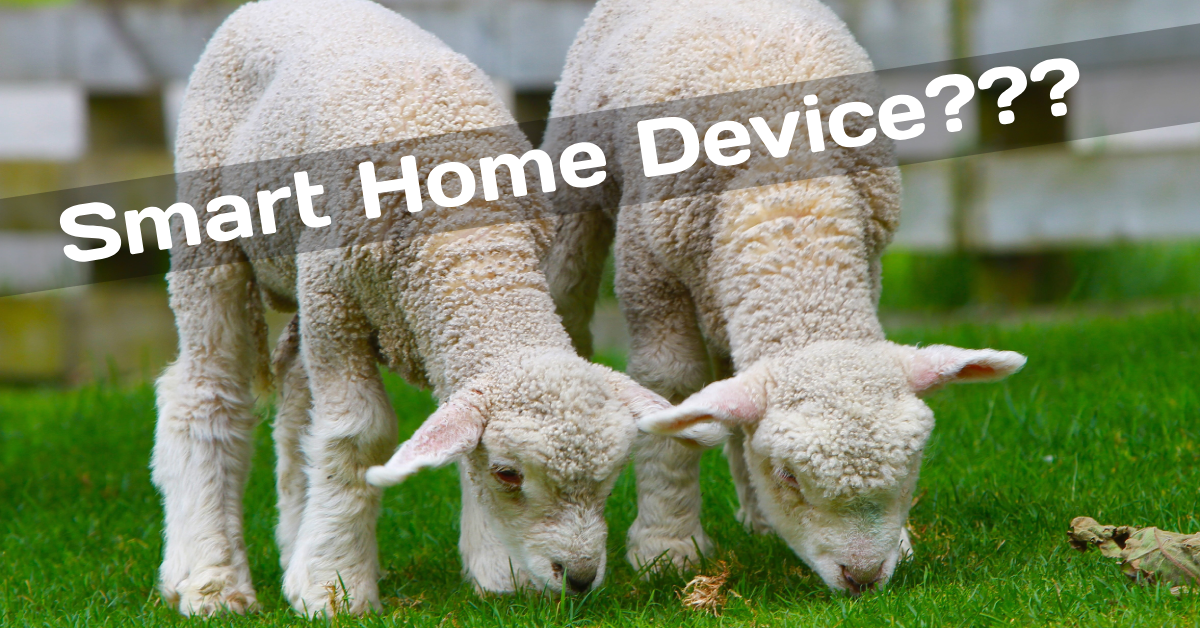What counts as a smart device? The definition offered by constellation.com is “any electronic device that can be connected to your smart home system, that can interact with other devices, and that can make some decisions on its own.”
Therefore, a smart device is:
- Electronic
- Decision making: “Makes some decisions on it’s own”
- Connective: Connects to your “smart home system” / ”can interact with other devices”
One thing I need to make clear. This definition is correct.
Now I’m going to spend the rest of this blog post trying to prove it wrong.
Why? To expand our idea of what a smart home can, should (and should not) include. Hint: It’s not only electronic, decision making devices that connect to the rest of your home.
Being smart does not make a device better.
I’ll also add a couple more criteria that define a “great” smart device
- Safely reduces complexity in your life
- As independent of wifi, electricity, and other devices as possible (the toilet standard)
1: Not Electronic – Does a Smart Device need to be electronic?

Let’s look for things that fit the second two criteria (decision making and connective), without being electronic.
Ever seen a smart lawn mower? Like a gigantic roomba given blades, roaming up and down a yard in perfect lines?
I lived near a place called American Fork, Utah. Even though the city is surrounded by millions of people, within a generation it had all been farmland. There are still little orchards and fields randomly scattered throughout, where families still hold onto a little more land than you can find in the newer cities.
Want to know what they get to automatically mow their lawns?
A sheep.

I kid you not, they let a sheep or a goat out in their oversized backyard, and it keeps the grass nice and trim.
If you paired your sheep with a smart-locking pen that only let it out at designated times, you would have:
- A non-electronic device
- That has some decision making (chewing on the longest grass)
- And integrates to your smart home system (via it’s smart-locking pen)
Some non-electronic mechanisms that could make a decision based on weather:
- Something that works based on whether ice stays frozen
- Something that works if the sun is out or not
- Something that works based on the size of a barometer balloon
With a little creativity, these types of mechanisms could integrate into a Smarthome. Would it be easier to just hook them up by making them electronic? Probably. But all of these devices could be made to pass the toilet test, described below. (It’s the test that I feel defines greatness in any device, smart or not).
2. Not Connective – Just Smart Devices Without the Security Risks

Probably the easiest to demonstrate: things that are electronic, decision making, but not connective.
Since the earliest days of science fiction, robots have been making electrically powered decisions. And yet, wireless connectivity seemed so far beyond imagination, that R2-D2 has to carry a little probe-plugin thing to interface with door locks and X-Wings.
And yes, today you can buy companion robots who can live in your home, doing all sorts of things, from vacuuming your floors, to recording precious moments of you and your family, no existing smart home required.
Robots are fun to consider, but one benefit of turning off the wifi? A more secure home, with almost all the same benefits.
Consider these other examples of disconnected electronic decision makers:
- Fridges with doors that close after too long hung open
- Auto-tinting windows
- Lights that turn warmer at sunset
- Locks that lock after the door closes.
Essentially, if you take away the connectivity from any smart coffee maker or appliance, you get something that functions extremely similarly to the original thing –
It’s just safer from hackers.
Worth considering – do you need your coffee maker becoming a hackable remote access point to your wireless network, or will a simple timer give you the same hot coffee when you need it?
3. Not Decision Making – The Wallace and Gromit Smarthome

- Electronic
- Connects to your “smart home system”/can interact with other devices
- Makes some decisions on it’s own
Before the word IoT was a buzzphrase, imagination was captured by Wallace (of Wallace and Gromit) creating dazzling Rube Goldberg machines that would interact, simultaneously getting him out of bed, dressing him, making his breakfast, and applying shaving cream.

Technically, Wallace uses animal input (his trusty assistant Gromit) to apply decision making input, but on occasion he’s the one pulling the lever. (Also the entire thing is fictional, but hopefully it makes my point.)
Do we need our electronics to make decisions, if they integrate with our existing stuff and make our lives easier?
Consider these devices that wouldn’t be considered “Smart” by the agreed on definition:
Scale that weighs you and records body fat percentage in an app
Water softener that tracks the amount of water that’s passed through it
Basically any number of things which track or measure, but only for reporting, not for decision making.
This is my weakest point. The quintessential characteristic of smart devices is the word “smart”. Smart as in, decision making. Indeed, the “If/Then” statement is a foundational pillar of most electronics, right down to the code.
Nevertheless, if something is an amazing alarm/dresser/chef/barber, would you turn it down because it wasn’t decision making? Not every part of a smart home needs to be smart.
Bonus: What Makes a Smart Device Great? (The Toilet Standard)
I made offered two criteria that outline the difference between a smart device, and a truly great smart device:
- Safely reduces complexity in your life
- As independent of wifi, electricity, and other devices as possible
Safely Reducing Complexity
Now, let’s talk turkey about what “reducing complexity” actually means in the world of smart devices.
Every gadget and gizmo out there claims to streamline your life, but if you have to juggle a circus of apps, each with their own set of updates, passwords (which you’ve forgotten at least once), and quirky interfaces, then tell me — where’s the simplicity?
A truly smart device should be like that one friend who always knows a guy who can fix things — unobtrusive, reliable, and quietly capable. You shouldn’t need a Ph.D. in Instruction Manuals or a personal tech guru on speed dial just to operate your smart blender.
And safety? Let’s not even start with devices that overshare your data like a gossipy neighbor. A great device respects your privacy, doesn’t blab your daily routines over the internet, and certainly doesn’t invite hackers to a free-for-all data buffet. Reducing complexity means tightening security, not just condensing physical clutter.
Imagine a smart device so seamlessly integrated into your life that it’s like a silent butler, dressed in digital camouflage, only making its presence known when you truly need it. Now, that’s a device that doesn’t just claim to simplify your life, but actually does it. It should protect your data, not parade it, and assist without causing additional distress.
In the quest for simplification, we should seek devices that require minimal interaction to do their job fantastically. Think of a thermostat that learns your schedule and adjusts the temperature, not just because it’s fancy, but because it means one less thing on your mental checklist. That’s reducing complexity without any of the “smart” fanfare.
To explain my second addition to the definition of a great smart device (being independent), I offer you: Toilets.
Toilets
Have you ever considered how amazing toilets are?
Think about it. When the power is out, our entire lives shut down. No more lights, no more TV, and if your laptop battery is low you could even lose access to a computer.
But plumbing works. Faucets still pour, which makes sense. Just gravity pushing water through your home. But toilets – toilets still flush.
Doesn’t that seem kind of . . . weird?
Honestly I don’t fully understand it. Something about siphons, which work just based on physics, not electricity. Yet the fact that we press a button or pull a lever and the toilet creates a massive amount of force to whisk our leavings away to somewhere else; it’s a miracle on par with vacuum cleaners and motor vehicles, yet it works with no electricity or fuel.
In my opinion, the toilet is the standard by which all devices, smart and otherwise, should be held to. Is it amazing? Is it reliable? Does it work with the power off?
Are traditional toilets considered smart devices? Obviously not. But their independence should be a part of the definition of a “good” smart device.
It sounds odd, but when the wifi goes out, can you still unlock your door? It’s an important question to answer if you’re planning to “upgrade” your doorknobs.
A New Kind Of Smart Home
The future of smart homes ought to blend the traditional with the technological. We should find devices that add value through simplicity, reliability, and independence from what can be fragile grids.
Let’s innovate beyond the ‘smart’ label and create devices that are truly beneficial—where the brilliance isn’t in the device’s ability to connect to the internet but in its capacity to function seamlessly, securely, and in harmony with our lifestyles.
As we move forward, imagine a home where during a power outage, your day continues uninterrupted. You can still lock your door, brew your coffee—maybe even a sheep continuing to keep the lawn pristine.
In redefining ‘smart,’ let’s prioritize purpose and subtlety over connectivity. A truly intelligent home isn’t the one with the most gadgets, but the one that uses innovation to provide a comfortable, efficient, and secure living space. In essence, the smartest devices are those that fit so naturally into our lives, they go unnoticed.
That is the hallmark of a genuinely smart design.


